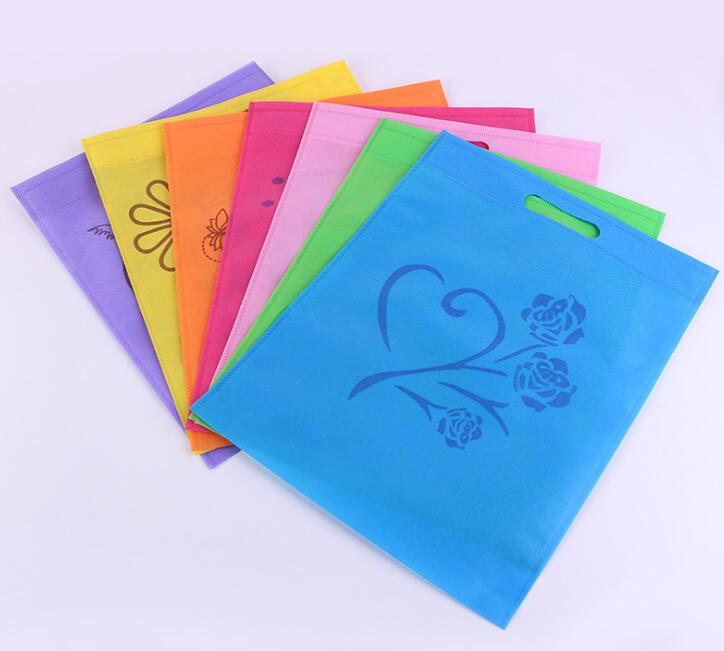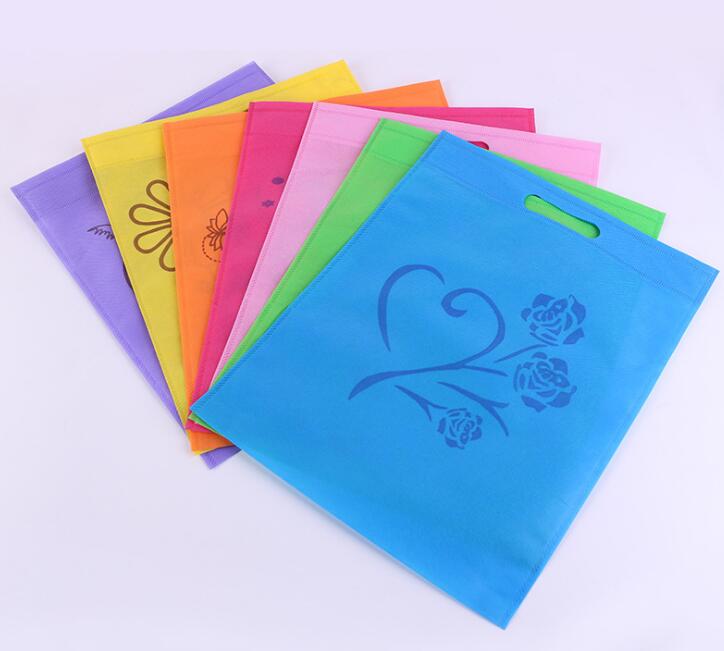
Non-woven bags generally use the screen printing process, which is often referred to as "screen printing", which has always been a common printing process for many manufacturers. It is usually printed manually, so the color control in the process is not easy to control, so many new non-woven printing methods have emerged. Here we introduce the mainstream ones on the market:
However, with the continuous improvement of customers' requirements for the exquisite printing of products and environmental protection, many new non-woven printing methods have emerged. Here we introduce several mainstream products on the market.
1. Watermark
It is named after its use of water-based elastic glue as the printing medium. It is more common in textile printing and is also called printing. Blend the color paste and water-based elastic glue when printing. No chemical solvents are used when the printing plate is washed, and it can be washed directly with water. It is characterized by good tinting strength, strong covering and fastness, washing resistance, and basically no peculiar smell.
2. Gravure printing
The finished products processed in this way are usually called laminated non-woven bags. This process is divided into two steps, that is, the traditional gravure printing process is used to print the image and text on the film, and then the film with the pattern is laminated on the non-woven fabric by the laminating process. Generally, non-woven bags printed with large-area color patterns use this process. It is characterized by exquisite printing, machine production in the whole process, and short production cycle. In addition, the product has excellent waterproof performance, and the durability of the finished product is better than that of non-woven bags produced by other processes. The film is available in bright and matt, and matte has a matte effect! The disadvantage is that it conflicts with the concept of environmental protection, because the film is difficult to degrade.
Three, thermal transfer
Thermal transfer is a special type of printing in printing! This method requires an intermediate medium, that is, first print the graphics on the thermal transfer film or thermal transfer paper, and then transfer the pattern to the non-woven fabric by heating the transfer device. The commonly used medium in textile printing is thermal transfer film. Its advantages are: exquisite printing, rich layers, comparable to photos. Suitable for small area color image printing. The disadvantage is that the price is high, and the printing cost is high.
use
Used in the production of various plastic-plastic and paper-plastic composite materials.
Features of sealing bag making machine:
1. The whole machine adopts imported PLC, and the man-machine interface is centrally controlled. Stable performance, easy to operate and maintain. The operation interface can switch between Chinese and English.
2. All parameters are displayed in real time by the man-machine interface, and the bag-making speed, bag-making length, temperature, counting, finished product conveying, etc. can be preset.
3. LPC automatic correction, double photoelectric tracking and unwinding, automatic constant tension control, AC frequency conversion and constant speed automatic feeding.
4. Imported dual-servo drag control.
5. The upper and lower sealing pressure are driven by AC variable frequency motors.
6. The temperature adopts PID adjustment, 0~300℃ adjustable, non-contact automatic control, centralized setting of man-machine interface.
7. The temperature is centrally controlled by the computer.
8. Pneumatic multi-function automatic punching, automatic collection of edge material removal, and static elimination device.
9. Working method: fixed-length bag making, photoelectric tracking bag making
10. Punching method: continuous, interval, and stop can be set, and the punching time can be preset
11. Double delivery method: one to six times delivery.
12. Batch sending function: The workbench has batch sending function, and the batch sending quantity can be preset.

<< previous
next >>